Written By: Lawrence “LT” Tolman
7.3 Powerstroke 1994 To 2003: The Big Block of Diesels
You’ve heard the phrase “bigger is better” many times in your life, especially when talking about engines. In the early 90’s when Dodge and Chevy were putting mere 5.9- and 6.5-liter diesels into their trucks, Ford raised the bar with its juggernaut powerplant, the 7.3-liter Powerstroke. To this day, it remains the largest displacement diesel engine ever installed from the factory into a pickup, but the question remains: was bigger truly better? Why hasn’t anyone come close to matching its displacement? The two runners up are the 6.7-liter Cummins and Powerstroke, but those are still 36 cubic inches smaller than the 7.3-liter behemoth. While it was never known to be a racehorse, its reputation was that of being one of the most reliable and overbuilt engines to hit the road in a production truck, but as always, you’ve got to wonder, what breaks when? Well today, we’re gonna find out.
What Makes It Tick
The 7.3-liter Powerstroke is often confused with the 7.3-liter IDI which was used in Ford pickup trucks from 1988 to 1994. Both were manufactured by Navistar International, but there were several key differences that made the Powerstroke superior to the IDI version, and top of the list was the addition of direct injection. While the Cummins engines of the day used a poppet injector, Ford (technically International) used a design which has seen heavy use in commercial and industrial engines, HEUI, or Hydraulic Electronic Unit Injection. It’s an oddball design which actually works quite well, and its advantage over mechanical injection pumps like the P7100 is its ability to vary injection timing for a broader power curve.
Inside the engine is a conventional oil pump which lubricates all the critical moving parts, but there is also a second oil pump. The High-Pressure Oil Pump (or HPOP) uses the same oil as the low-pressure system, except now its pressurized up to 3,000 PSI and fed through an oil rail which is common to all eight injectors. All at the same time, low pressure diesel fuel is sent from the tank to the engine via a lift pump, through a couple filters, into the cylinder heads, and it winds up in the injectors in a cavity opposite the oil, which is where the magic happens. When it’s time to start the injection event, an electronic solenoid opens a valve allowing oil to flow, which pushes down on a plunger and forces the fuel into the engine. Because of the differing surface areas of each side of the plunger, there is a pressure multiplication of 7:1, which means 3,000 psi of oil pressure gets converted into 21,000 psi of fuel.
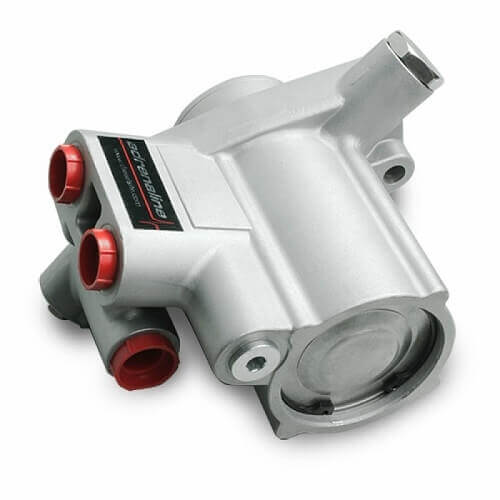
One unique feature of an HEUI system is the built-in fail-safe of never being able to run the engine without oil. If you spring a massive leak and the oil level drops below 7 quarts, the HPOP won’t be able to generate the required pressure, and the engine simply won’t run saving you from potential bearing damage (although if all 14 quarts leak out at once, you might get a visit from the EPA’s disaster response team). Aside from the injection system, the rest of the Powerstroke is pretty standard. It features two valves per cylinder, a compression ratio of 17.5:1, and power varied between 210 and 275 horsepower, and the torque figures went from 425 to 525 foot pounds of torque over the nine year production run which ended in 2003 with a little over two million 7.3’s produced.
Got 73 Problems…
Mechanically, a 7.3 is about as bulletproof as they come, and rarely will you have a severe mechanical failure. The rotating assembly is solid, the heads are securely bolted to the block, and just about any moving part has a service life longer than the rest of the truck will last. There are, however, a few small issues associated with the HEUI system which might leave you stranded a time or two. Most of them are inexpensive fixes and easy for a DIY’er to take care of without a lot of effort. In fact, the biggest problem you might have while owning a 7.3 is keeping all the acronyms straight.
IPR Valve (Injection Pressure Regulator Valve)
The Injection Pressure Regulator valve is physically bolted to the high-pressure oil pump and acts just like a Fuel Control Actuator on a CP3. Based on how much oil pressure is needed, the IPR receives commands from the ECM and meters how much oil is allowed to enter the HPOP, thereby controlling the pressure output. The minimum oil pressure necessary for the 7.3 to run is 500psi, and under wide open throttle it should be around 3,000. To achieve its target, the duty cycle of the solenoid is constantly varied. Since its both an electronic and mechanical part, the IPR solenoid is known to fail, and as it does, you’ll notice rough running, surging, stalling, and sometimes a no-start condition. It can fail for several reasons, whether it be a damaged O-ring, sticking valve, or fault in the internal wiring. Regardless of which case you have, there is a solution. If all you have is a bad O-ring, you can pick up a seal kit for about fourteen bucks, or if you have an internal fault, you can get a whole new valve for just over $200.
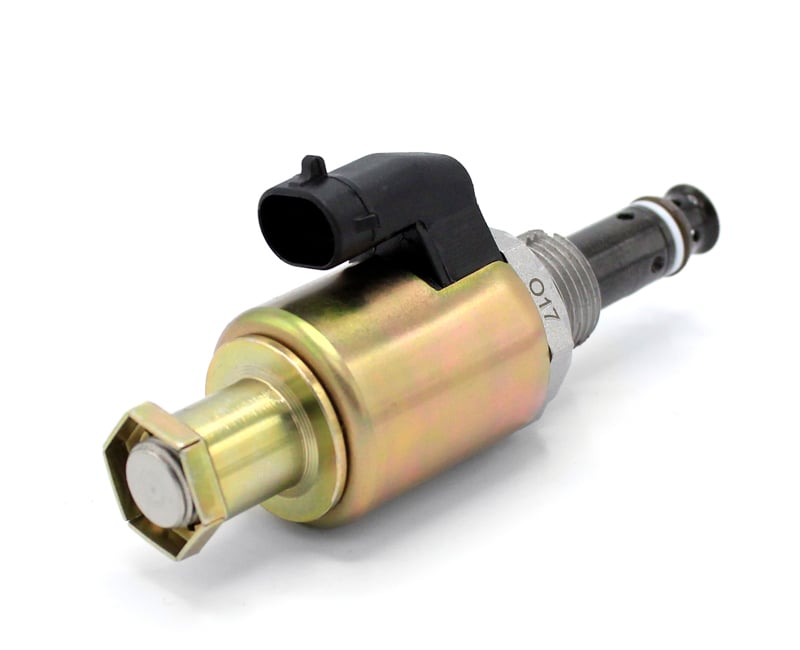
ICP Sensor (Injection Control Pressure Sensor)
The IPR controls how much high-pressure oil you get, but it’s the Injection Control Pressure sensor which tells the computer how much pressure there actually is. Without this information, the ECM wouldn’t be able to precisely control the operation of the engine since there’d be no feedback; you can think of the ICP as an O2 sensor of sorts. On a 7.3 its located on the driver’s side cylinder head towards the front of the engine, and it’s pretty easy to access in the event of a failure. Speak of which, if the ICP is on its way out, you’ll notice hard starting, rough running, surging, missing, or not starting altogether. You’ll quickly notice most parts that fail on a 7.3 will exhibit similar symptoms, but there are several ways to narrow it down to the ICP. You might have a check engine light with one or more codes (P2283, P2284, or P2286), but the DTC’s don’t always pop up. If you unplug the electrical connector and see oil, that’s a dead giveaway of a failure, finally you can just unplug the sensor at the time your truck is running and see if there’s a noticeable change in the idle sound. Normally, if you unplug the ICP sensor, the pressure will go from its idle range of 550 to about 750psi, and this spike will change how the motor sounds, and if there’s no change, it means you have a failed sensor. If the ICP is faulty, you will be back in business in no time, since it easily swaps out with basic hand tools, and a new ICP sensor can be purchased for just over one hundred dollars.
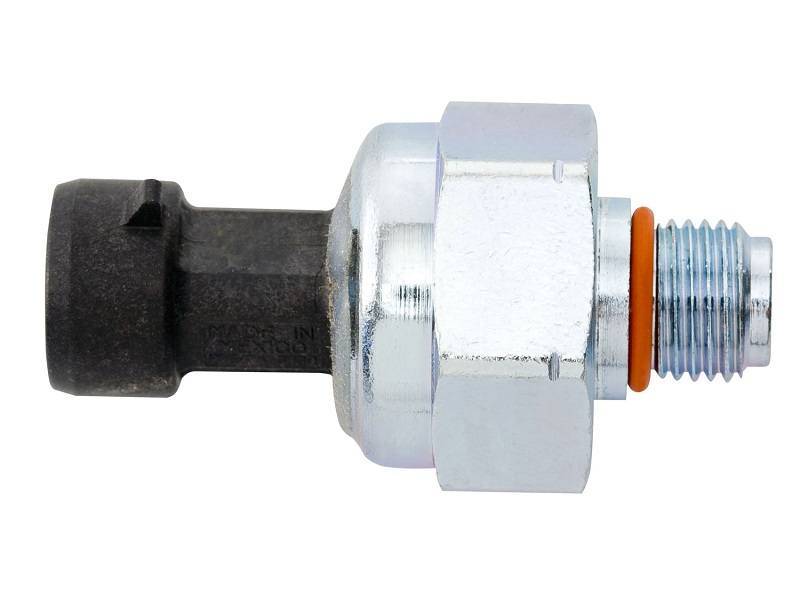
UVCH/IDM (Under Valve Cover Harness/Injector Drive Module)
In order to fire an injector and kick off a combustion event, the signal first comes from the ECM, but it can’t generate the required power to fire the injectors by itself. Even though the rest of the truck operates at 12 volts DC, the injectors are designed with an operating range of 100 to 110 VDC so another module is needed to amplify the signal and make the injectors work. This is where the 7.3 IDM or Injector Driver Module comes into play. It takes the low voltage signal from the ECM, and with some electronic wizardry, is able to output a much higher voltage. The power passes through a special part of the wiring called the UVCH (Under Valve Cover Harness) where it goes from outside to inside the motor, and ultimately winds up at an injector.
Because of its location under the valve cover inside a hot engine, in a high-vibration environment, the UVCH is known to rub though or break the wire’s insulation which can interrupt the signal heading to the injector. As you can guess, the symptoms of a bad harness include rough running, but it will be isolated to one or two cylinders and not the whole engine. If you have access to a scan tool, you can run a cylinder contribution test to ID the side, or if you are comfortable with a DVOM you can ohm out the wires between the connector pin and ground to see which bank has failed. Once again, the benefit of owning an older truck shows up since a replacement UVCH only costs $66. For that much, you might as well buy both sides, since if one is worn, likely the other isn’t too far behind.
While not as common, the IDM itself has been known to fail also, and if it does, you’ll have a similar symptom as a broken UVCH, and a few codes as well. If you do need a replacement module and are interested in extra power and a more responsive engine, a smart move would be upgrading to a modified IDM. With a few changes to the internal circuitry, the output voltage is raised, and the result is about 30 extra horsepower at the rear wheels.
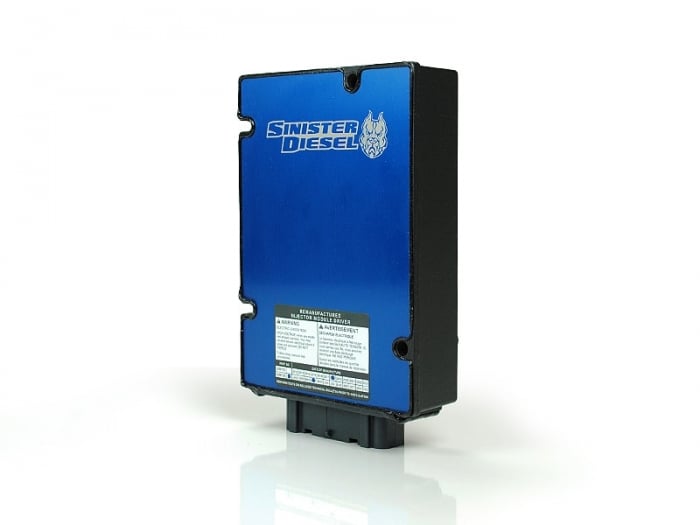
Other Issues
Most problems that you’ll have on a 7.3 are related to the high-pressure oiling systems, but there are a couple other small problems. If you have a smooth-running truck and it suddenly has a loss of power and smells like exhaust inside the cab, you need to look underneath the turbocharger, as likely you have a failed-up pipe connection. From the factory, a “crush donut” was used as a seal between the up pipe and turbo, but it’s prone to blowing out and leaking. While you could just replace the donut or even weld the pipes solid, a more reliable solution is to replace the stock up pipes and turbo Y adapter with some BD-Power up pipes. Be forewarned however, the up pipes are hard to get to: usually the transmission has to be removed in order to gain access, but some people have had success by removing a few body mount bolts and jacking up the cab. Up pipes are especially difficult to get to on an OBS Ford, since the clearances are so tight between the firewall and engine.
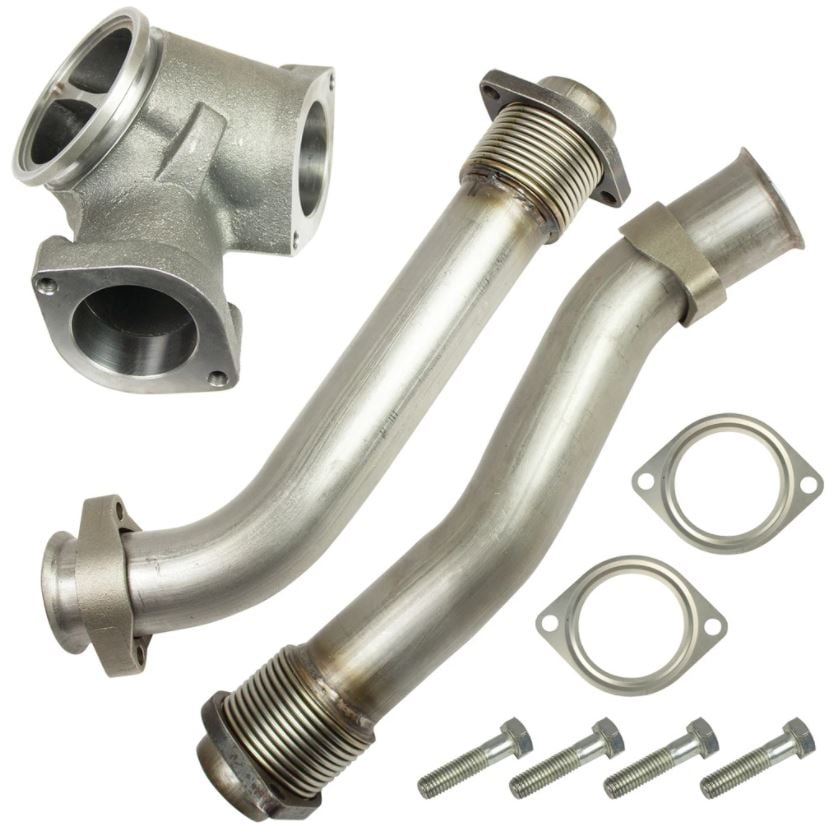
One negative side effect to the HEUI system is how hard it works your engine oil. Its common practice to keep the drain interval around 3-4 thousand miles since sludge and buildup can occur inside the injectors, which may lead to (surprise) rough running. In some cases, an injector can display symptoms which indicate it has failed, but the internal moving parts may just be stuck. Rather than replacing an injector, first give Hot Shot’s Secret Stiction Eliminator a try. It’s an oil additive which was designed with HEUI engines in mind and can clean out the deposits inside the engine and free up the insides of your injectors, saving a ton of money. It’s not a cure all but is certainly worth a try at $32. I mean, most of us spend more than that at lunch every day.
Add More Power?
Let’s say you have your old Powerstroke tuned up and running smooth, all the common problems have been taken care of, and now you want to make it faster. Right off the bat, you should realize you’re barking up the wrong tree, but then, “fast” is a relative term. There have been a few people who have successfully taken a 7.3 over the magic one-thousand horsepower figure, but you can likely count those people on your fingers and toes. Even though there is plenty of aftermarket support for the 7.3, most people will make it to the 400whp mark and call it a day. Considering most stock trucks dyno around 160hp at the wheels, 400 is a very solid goal, and represents a gain of about 240 extra hp. For that benchmark, you’ll need a few basic parts. Like any gas or diesel, you will start with airflow upgrades like a 7.3 Powerstroke cold air intake and free flowing exhaust, but those will only get you so far.
Modern common rail trucks are very easy to tune and can make tons of power with nothing more than a reflash, but it’s hard to find a good custom calibration for a 7.3. Box programmers do OK on a stock truck, but once you start changing hard parts, you’ll need to get custom. DP-Tuner writes tunes for the 7.3’s which will be tailored to your trucks specific needs, whether your truck is stock or highly modified. The best part is they’re loaded on a TS 6-position chip, so within a second or two, you can change from stock, to high idle, towing, hot tow, race, or the big tune.
The HEUI system will need some attention if you want to make it to 400hp or more, and that’s simply because it takes more oil to fire the injectors longer and make more power. You can start at the heart of the system and ditch the stock (and likely high mileage) pump for an Adrenaline HPOP which has a much greater oil volume than stock. The great thing is, if you are replacing a failed pump you can run the Adrenaline HPOP with stock injectors, but it will also flow enough oil to support a larger set of injectors as well.
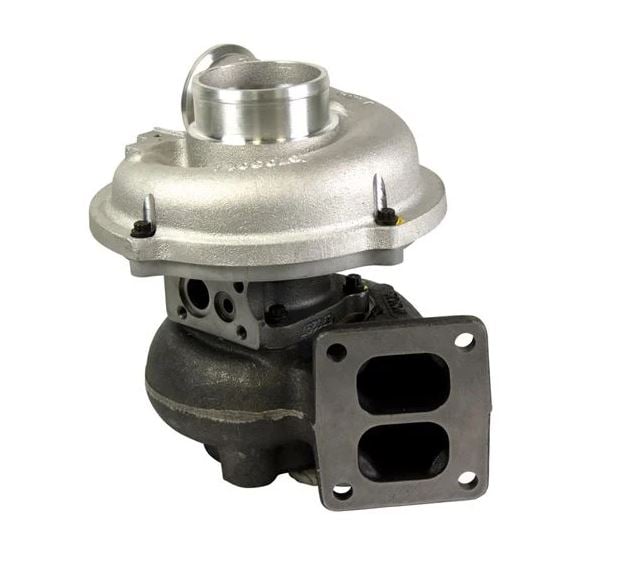
In regards to fueling your diesel, it’s a delicate balance between enough fuel to meet your goals, and too much fuel which leads to excessive exhaust gas temps. A set of Dynomite Diesel Stage 2 Ford 7.3 injectors will add about 100 horsepower to your 7.3, can increase fuel mileage by about 1-2 MPG, and can be used with a stock 7.3 turbo. However, to get the most out of a larger injector you’ll want to be pumping a little more air than the stock charger can supply. A BD Diesel Thruster II is the perfect 7.3 turbo upgrade to match for some 100hp injectors. It flows 40% more air than a stock turbo, is a direct bolt-in swap, and will give you more power, lower EGT’s, and quick throttle response with no negative side effect like compressor surge.
Its important to note the OBS F-250 and 350 (1994.5 to 1997) was not equipped with an intercooler; the compressor discharge went straight into the engine. Hot air from the turbo is much less dense, which means it can contain less fuel (and make less power). There isn’t a ton of extra space behind the grille, but luckily Banks Power offers a Techni-cooler intercooler system which easily installs, removes a ton of heat from the compressed air, cools off the exhaust gas, improves fuel economy, and the included twin ram 7.3 intake manifold makes for an even distribution of air between the two cylinder banks.
One last thing to consider are the connecting rods. The earlier OBS trucks used a forged rod, which is good for around 600 horsepower, but the later Superduty-era 7.3’s were mostly equipped with a weaker powdered metal rod which is only good for around 450 horses. There was some overlap at the time of the transition and there’s no clear manufacturing cut-off date, so if you’re not sure what type of rod your engine has, you’ll have to crawl underneath the truck and scrape the grease off an ID tag to run the numbers. It should go without saying, you need to plan your power goals according to what your engine will support.
All Dinosaurs Went Extinct…
Even though the 7.3 is a very reliable workhorse of an engine, it eventually was phased out. Partly due to emissions regulation, it was replaced with the 6.0 Powerstroke which still used the same HEUI style injection. Initially the 6.0 was supposed to be more reliable, but we’ve all heard the horror stories and know the truth about the plethora of problems the six-liter has. That’s part of the reason why the 7.3 is still so loved to this day. Out of the two million plus units manufactured, many are still on the road and will be for a long time to come. If you are considering buying or building one, just remember to have realistic expectations. If you want a 600hp Ford, you might consider starting with a 6.4 or even a 6.7L Powerstroke, since they can build power so much easier. But, if you just want a reliable and efficient powerplant that doesn’t break the bank, the 7.3 just might be the diesel for you.
7.3 Powerstroke Specs:
- Displacement: 444 Cubic Inches
- Block/Head Material: Cast Iron
- Compression Ratio: 17.5:1
- Firing Order: 1-2-7-3-4-5-6-8
- Bore: 4.11″
- Stroke: 4.18″
- Factory Intercooler: First introduced in 1999 model years
- Fuel Injection: HEUI (Hydraulic Electronic Unit Injection) – Basically the injectors are fired based upon oil pressure
- Valves: 16 (2 per cylinder)
- HP/TQ Ratings:
- 1994.5-1997: 210HP/425TQ
- 1999-2003: 275HP/525TQ
- Available Transmission Options:
- 1994.5-1997
- Manual: ZF5
- Automatic: E4OD
- 1999-2003
- Manual: ZF6
- Automatic: 4R110
- 1994.5-1997

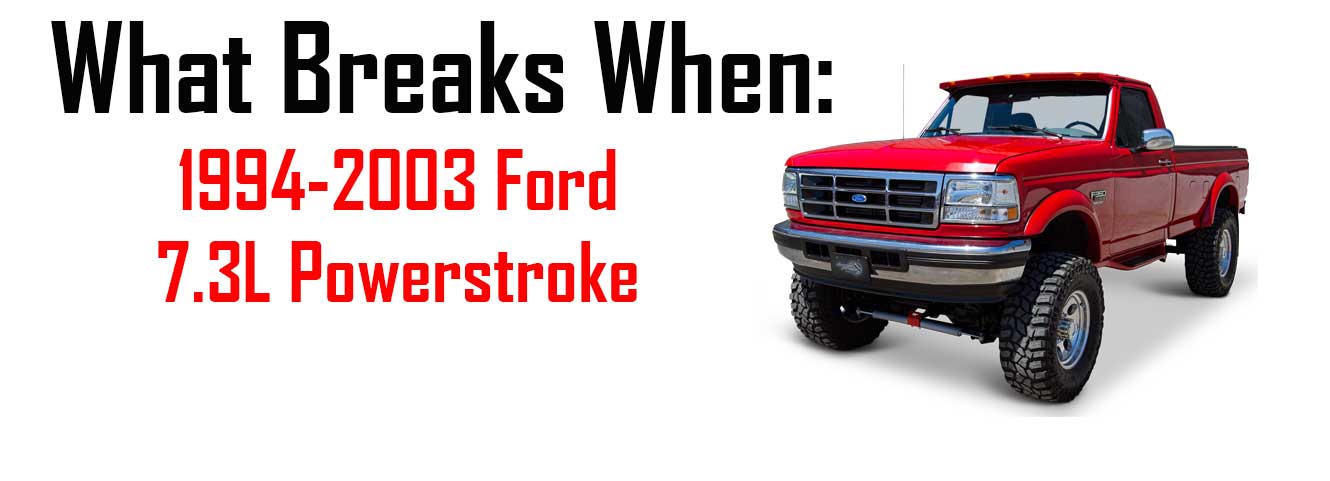
I own 7.3 liter OBS 95 and 97 Ford 350 XLT and I’ve built a six door truck with the 95 350 xlt body with 7.3 power stroke in it witch I want to keep the five speed standard in it . My question is I don’t know witch programmer to use or where to get them at so far is all I can find are for 2003 and over who sales programmers for 95 to 2003 year models or OBS trucks . Can you suggest ant option? Thanks for your assistance
Sounds like a REALLY cool project. We’ve seen a few six door conversions and they are just massive and definitely eye catching. On the programmer / chip, we’ve had the best luck with Edge’s Revolver, which plugs directly into the PCM and gives six adjustable on-the-fly power levels.
Here’s an example:
https://www.dieselpowerproducts.com/p-16553-edge-revolver-six-position-chip-95-03-73l-ford-powerstroke.aspx
And if you’d prefer something with an integrated screen to monitor engine parameters, check this option out:
https://www.dieselpowerproducts.com/p-edge-revolver-six-position-chip-and-insight-cts3-performance-kit-95-03-73l-ford-powerstroke
Hope this helps, if you’ve got any other questions, feel free to respond or give us a call: 888-993-4373.
I have a 03 7.3 super duty 2wd Starting yesterday when I get all the gas it feels like something is holding me back but all my gauges are perfect but my exhaust temperature is out the roof ED ideas what could be causing this anymore
Are you also able to monitor transmission temperature and boost? There could be a multitude of things causing this, but starting with the most prevalent for now. If your torque converter is slipping excessively, would cause both issues. Further, if your turbo was not properly building proper pressure, again, would cause both issues.
One other thing I was thinking about in regards to your issue and is very common on the 7.3’s, is a cracked or blown intercooler boot. You’ve got a total of six boots ranging from the y-pipe to the connections at the intercooler, and these can frequently develop anything from a pinhole to a full on crack in them. This will cause an obvious pressure drop, resulting in significantly reduced air being fed to the cylinders, resulting in a big power drop and excessive EGT’s. The best way to test this, but not always feasible, is to remove the air intake hose that connects to the compressor side of the turbo and install a “cap” basically something that looks like a coffee can with an air chuck fitting. Then, you hook up an air compressor with a regulator and pressurize the system (engine not running) to around 20 psi and look for leaks, sometimes even fogging the system. Many times, these cracks are not evident / visible until they are pressurized, hence the reasoning for doing this procedure.
My 97 7.3 starts up fine then all of a sudden it starts running rough kinda like it’s missing out shut it off an start it back up runs fine it will also do the same thing while driving down the road any help?
Hi Dakota
With an issue like that on a 7.3, being able to pin-point an electrical issue from a fuel/oil delivery issue, will help quite a bit. A scan tool like the Autoenginuity SP03 or a monitor like an Edge Insight, would be the best item(s) to have on hand. If those are not available there are a few things you can try to hopefully narrow it down.
First, I would disconnect the ICP sensor. This is located on the drivers side oil galley, towards the front of the engine. If there is oil on the electrical side of the plug, chances are this needs to be replaced, however, that can be addressed later. If you start the engine with it unplugged the computer will sense that it is not receiving data from that sensor and default to a given ICP based on MAP, throttle input, and RPM.
Once you have this unplugged, take it for a drive. Chances are there may be a check engine light, referring to the ICP, that is fine. If you find the truck no longer has the issue, replace the sensor, and the pigtail, plug it in and take it for a drive. If this does not fix the issue, and there is oil in the connection, still probably a good idea to replace, but that can be address later.
With your situation, the next best thing would be to get a scan tool on the truck, like the Autopenginuity and monitor the CPS voltage. If you see the voltage on the sensor drop off then the truck dies, I would replace it.
Other than that, hard to go into further detail. I would shoot us a call and hopefully we can help get this figured out.
Thanks
Ben
Hey i got a f 250 7.3 diesel it act like want to crank over but it wont fire up what causen tat
Have 2001 7.3 about 120K on it have had no issues pulls trailers great. Driving to parts store no load running AC on max when engine starts dragging bad. I shut off AC put windows down and with in 1/2 mile running great again. Any ideas was thinking turbo I used AC a few days later on a short 10 mile trip between farms and no issue. Thanks
Well, if it truly was due to turning off the A/C, and not coincidental, its definitely not the turbo as that’s going to be unrelated. If it is due to the air conditioning, its plausible that the A/C compressor is failing and actually holding back the belt, hence the rest of the engine. Overall, sure, running air conditioning does increase load on the engine to a certain degree, but not to the point that its vastly noticeable the vehicle is running significantly worse. Since it hasn’t acted up again, I’d recommend keeping an eye on it and if it does act up again, look at the gauges, see if the battery voltage drops significantly, or anything else abnormal, then start listening for any noises, turn the A/C on/off, and basically try to pinpoint any other factors that could be causing it. Otherwise, have the A/C compressor tested and go from there.
The information you’ve shared is priceless, and truly enlightened where to start with my 20 year old 7.3. I know now where to start for my basic upgrading on the engine which has over 220,000 miles. Thanks again for the information. I also have a 93 12 valve, and was wondering if you could share any info towards that engine 👍🏻
Thanks so much, we really appreciate that, and glad we could help. We don’t currently have a specific “What Breaks When” article on the 1st Gen Cummins (maybe we should…..), but below are some related articles that we’ve written you may find helpful. Overall, that generation of trucks are very dependable, but still some things you’ll want to keep an eye out for, such as:
The Killer Dowel Pin (KDP): https://www.dieselpowerproducts.com/p-6478-peak-diesel-performance-kdp-repair-kit-89-93-59l-dodge-cummins.aspx
Slop in the Steering Shaft: https://www.dieselpowerproducts.com/borgeson-steering-shaft-89-93-dodge
and if its an automatic, that will be another piece to the puzzle that will need to be gone through. If you’ve got any questions, always feel free to give us a call or send an e-mail to [email protected]
https://www.dieselpowerproducts.com/blog/dodge-automatic-transmissions-what-did-i-get-myself-into/
https://www.dieselpowerproducts.com/blog/how-to-add-300hp-to-mechanical-cummins/
https://www.dieselpowerproducts.com/blog/performance-vs-longevity-can-you-have-both/
https://www.dieselpowerproducts.com/blog/dodge-ram-101/
https://www.dieselpowerproducts.com/blog/cummins-101/
I have a 2002 7.3 diesel F350. I have a problem that when I tried to start it , it cranked but didn’t start. I waited a short while then tried cranking again. I lost all power past the batteries. Later I tried again, power at the instrument panel, tried starting again and lost all power. Do you have any idea of what is causing this. I have tested circuits beyond the batteries and no power. PS I live in Australia.
First, I would recommend checking voltage on the batteries. Then, even if there’s a good charge, put a jumper box on there for an hour or two and then try cranking again with the jumper box still hooked up, then see if anything has changed. Presuming the batteries are good, test all applicable fuses and make sure its not something simple. Lastly, if you’re able to get your hands on a scan tool, see if any communication can be made with the ECM via the OBDII port, because if nothing changes with the simple stuff, could very likely have a failure of the ECM.
I have a low mileage, ’03, 7.3 liter in a totaled body and would like to drop it into another. I’ve found a high mileage ’04 with a 6.0. Are they compatible? Transmission also compatible?
Thanks for your help!
Anything is doable, that said, no, you won’t be able to merely drop the engine in place and plug everything in. Being that you have essentially a donor truck (the 2003), you’ll hopefully be able to salvage everything you need into the 2004 that needs to be transferred, such as the fuel system, wiring, PCM, etc. Further, yes, the transmissions themselves are also different (4R100 vs. 5R110, so it may be in your best interest to also swap the transmission, otherwise you will require adapters. There are some great resources online for people whom have done the swap depending on configuration for reference.
If I change the fuel pump on a 1997 diesel power stroke could it affect ( knock off) the timing?
I would say that’s highly unlikely. Those have a mechanical pump located in the valley which is driven on the cam. That pump pulls from the tank, then hits the fuel bowl where a spring and poppet regulate pressure. The stock spring will try and keep it around 45-55 PSI. You can put a stiffer spring in the stock fuel bowl to increase it to 65PSI, with virtually no adverse effects. There are 75PSI springs out there too, which can potentially cause issues if there are weak o-rings or what not in the fuel system down the line. One of our sales technicians whom has owned a small fleet of 7.3’s over the years sets all of his 7.3’s to 75PSI pretty much right off the bat.
Any idea of a solution to an ICP/IPR out of tolerance fault under accel with a brand new HPOP, no oil leaks, 65 psi fuel at the bowl, and new sensors and harnesses?
Jeremy, you bet. I ran this by our 7.3 Powerstroke expert here, Ben and here’s what he had to say:
“Dealt with a similar issue. I would get a manual gauge on the oil system to see what the actual ICP is. I chased that on mine for a while trying to use an Edge Insight to diagnose it. After putting a manual gauge on I could instantly see my truck was making too much ICP at idle. Since it was making too much, I needed to figure out why the IPR was not metering it down at idle. After removing the IPR I found the plunger to be stuck. I cleaned and replaced it. Issue went away. If the actual pressure is too low, you may still want to inspect your IPR. Otherwise you have a leak somewhere. It may not be external. Could be a leak from an oil galley plug under the valve cover. Could be an o-ring on an injector. Lastly, if the manual gauge is showing something different than the ICP through the OBDII port, you may want to replace or double check wiring. For either the IPR or ICP, pull the covers back until you see fresh, non exposed, non oil covered wire. Then put a new pigtail on.”
Hope this information points you in the right direction, good luck!
I have a question. About 6 months ago my Hpop reservoir cracked upon start up pumped all my oil out. This week the same thing happened upon start up the reservoir cracked pumped all the oil out. I have not found an explanation can you help? Thanks
Hmmmmmm……we honestly haven’t ran into this before, but maybe we can give some insight that could help lead you in the right direction. The closest thing I have seen is the reservoir gasket….
In typical Ford fashion, there are three types. 1996-1999.5 w/o Screen, 1999.5-2003 WITH Screen, and I assume something for 1994-1995, which is a two chamber HPOP. I cannot find a listing on that. Assuming this is a three chamber, 96-03 truck, you MUST use like-for-like on the gaskets. If you remove a gasket with a screen on it, you MUST put the same type in. You will also want to note the overlap on the 1999.5. If you have an early or late 1999, it would be best to get a visual, or buy both gaskets to be sure.
F6TZ-6619-AA 1996-1999.5 Gasket NO SCREEN
YC3Z-6619-BA 1999.5-2003 Gasket WITH SCREEN
I have a 97 f350 7.3 it has no boost or power. It starts good sounds good.. What could be the problem?? Can you help me please
Have you checked your EBV valve on the back of the turbo to confirm its properly opening after warm up? This is easily one of the most failed components on the 7.3’s and could be causing your issue. You can mechanically keep this open as a temporary check (use wire to hold it physically open), and if that is the cause, you would either replace with a new EBV or replace with a non-EBV Pedestal and outflow valve.
https://www.dieselpowerproducts.com/garrett-non-ebv-pedestal-94-97-ford
https://www.dieselpowerproducts.com/garrett-448179-0002-turbo-outlet-ford
https://www.dieselpowerproducts.com/p-11467-rotomaster-turbo-pedestal-with-ebv-94-97-73l-ford-powerstroke.aspx
Beyond that, check for any boost leaks at the boots. Typically, you can do a good visual on the boots to look for signs of wear or leakage. In a perfect world, you’d pressurize the system by installing a cap over the turbo that you can pressurize with an air compressor and regulator to simulate say 15-20 psi of boost, then you can shoot soapy water on your boots. If they need replacing, check these ones out:
https://www.dieselpowerproducts.com/silicone-y-pipe-couplers-73l-ford
These would be the most prevalent issues that would cause your lack of boost. If you have any other questions, feel free to give us a call, as well. 888-99-DIESEL
I have a 1996 F450 that just stopped shifting past 2nd. It has an auto(E4OD) transmission and it was recently rebuilt(but now is just out of warranty) and seemed to be running just fine and then I go to the store come back out to drive home and it’s stuck in 2nd. A buddy told me that it could be that the CPS went out on it. It has 87,000 miles and still has the original CPS. Could that really be the problem?
The first thing I would recommend is to scan for any codes that may be stored, which should give some insight as to the cause. That said, being the issue occurred without any warning and the transmission, in theory, should be in good shape, its more than likely electrical and could be either the CPS you mentioned or the VSS (Variable Speed Sensor) essentially not communicating the actual speed to the transmission. Ford did have a lot of issues with the CPS to the point they superseded from a black to a grey unit, so I’d recommend checking what you have, and especially if you have the original unit, upgrade to the grey connector and see if that fixes your issues. One other thing to note while I’m thinking about it, is you could be dealing with a stuck valve in the accumulator body, and its probable that when your transmission was rebuilt, the factory accumulator was not upgraded or replaced.
So. I saw your reference to adding an intercooler. Any tips on adding one to a 2000 e350 7.3?
Thanks
Unfortunately, no one has a kit for this as I’m sure you’re aware and we haven’t made the conversion ourselves, so don’t have anything in particular to share. There are definitely people whom have made the conversion but I’m not aware of a set of rules exactly to follow, such as exactly which intercooler to use, whether spacing the front bumper and grill is necessary, etc. After a quick search, I did find a few articles on ford-trucks.com with images that I’d recommend checking out:
https://www.ford-trucks.com/forums/1074044-intercooler-on-a-e-350-a.html
Two diesel mechanics moved in across the street. They have buddies that do tractor pulls with 7.3 fords. They use the tractor pull maps and a little secret sauce parts to get 1600Hp out of their daily drivers. I’ve got soot on my cars from their tires and coal rolling across the street LOL.
Sounds like good neighbors to have!
I have a stock 2001 F250 7.3L with 122,000 miles. It runs great but it’s becoming hard to start especially when it cold outside say below 50 degrees. I keep it plugged in and it does help but it seams to be getting worse. What are your ideas on this? Thank you so much
First and foremost would be to verify that the glow plugs and/or glow plug controller are working. Even if you’re plugging in the block heater, having functional glow plugs is especially imperative as the temperatures start to dip. Beyond that, I would test, or have tested, the high pressure oil pump to ensure its building adequate pressure. As the temperatures drop, the viscosity of your oil becomes thicker, so if your HPOP is already showing signs of wear, the thicker your oil is, it will further task the HPOP. And finally, as odd as this sounds, just double check that the outlet the block heater is plugged into is operational and there are no issues with your block heater cord or the heater core itself.
97 7.3 runs great then dies .restarts and runs great 300 miles and dies ..restart and does the same……replaced cam sensor ford part ..doese the same…any one have this problemm ….Thanks
Ronald, I apologize for not responding sooner, your message got lost. First question, do you have any active codes/check engine lights you could report back with? Is it the original HPOP (High Pressure Oil Pump) and/or have you verified the output pressure of the pump? To make sure I understand correctly, it runs fine for about 300 miles, then dies as you’re driving, then you can immediately restart the truck and it runs great for another 300 miles?
2003, 7.3. Had an oil leak on the passenger side of the truck. Enough drained out that the truck stopped. Mechanic replaced the high pressure oil pump. Picked up my truck. Appears, oil is being pumped into the fuel tank. MPG went from 13 to 17 mpg. Filled the fuel tank and fuel started leaking from the fill opening of the fuel tank…. What happened? Truck went from running like a top to hard cranking to start? Any ideas, what was done?
Mike, sounds like you have a couple of different things going on. Hopefully you only ran out of enough oil that starved the HPOP so it couldn’t fire the injectors, but didn’t cause any other damage to the engine itself. Is oil only found in the fuel tank after your mechanic swapped the HPOP? There’s no way oil could be getting pumped “directly” into the oil tank. How do you know there’s oil in the fuel tank? Could you instead be getting oil into the engine at the head? That’s more likely. Did your truck go from getting 13 to 17 MPG as you’re saying (got better), or the other way around (got worse)? Did your mechanic do something such as drop the fuel tank or need to disconnect the fuel filler neck, and possibly didn’t get it properly installed? Replacing the HPOP “shouldn’t” have anything to do with a fuel leak at the tank. Sounds like you need to take the truck back to the mechanic and see what they did, because you’ve got a bunch of issues here that really aren’t related to one another.